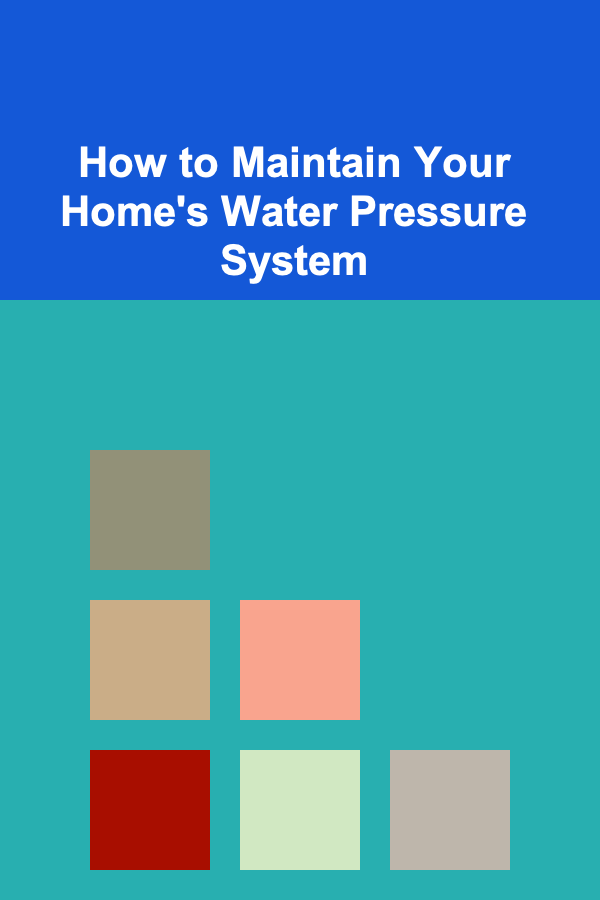
How to Design and Quilt 3D Quilting Patterns
ebook include PDF & Audio bundle (Micro Guide)
$12.99$7.99
Limited Time Offer! Order within the next:
Not available at this time

Quilting has long been an art form, with quilters utilizing intricate designs and patterns to create fabric masterpieces. Traditional quilts often feature 2D patterns, but the world of quilting is evolving with new techniques, including 3D quilting. 3D quilting adds depth, texture, and dimension to quilts, transforming a flat surface into an interactive piece of art. This article will guide you through the process of designing and quilting 3D patterns, from conceptualizing your idea to the final stitch. We will cover materials, techniques, and tips to help you create stunning 3D quilted designs.
Understanding 3D Quilting
3D quilting is the technique of adding depth and dimension to a quilt, creating visual interest and tactile appeal. Unlike traditional quilting, where patterns are flat and uniform, 3D quilting incorporates elements that stand out from the quilt's surface. These elements could include raised appliqué, folded fabric, pleats, or even fabric manipulation techniques like trapunto.
1.1 Types of 3D Quilting Elements
There are various ways to achieve a 3D effect in quilting, including:
- Puffy Appliqué: Adding batting or other materials under appliqué shapes to make them rise off the quilt's surface.
- Trapunto: A technique that involves adding extra layers of batting in specific areas to create raised, quilted patterns.
- Fabric Folding: Folding fabric into intricate shapes, such as in the case of a "fabric flower" or pleated designs.
- Ruching and Gathering: These techniques gather fabric to create ruffles or texture that pop out of the quilt.
- 3D Piecing: A method where certain pieced elements are constructed with volume, such as making cubes, diamonds, or other geometrical shapes that stand upright from the quilt's surface.
The combination of these elements is what makes 3D quilting such a dynamic art form.
Designing a 3D Quilting Pattern
Designing a 3D quilt starts with a vision. While the techniques to create 3D effects are essential, the design itself will determine the final look of your quilt. Let's explore the steps involved in creating a 3D quilting pattern.
2.1 Choose Your 3D Technique
The first step in designing a 3D quilt is deciding on which technique or combination of techniques to use. This will depend on your preferences and the type of design you envision.
For example, if you want a quilt that has dimensional flowers, you might incorporate fabric folding and appliqué. If your goal is to create a modern geometric quilt, 3D piecing techniques, such as constructing cubes or pyramids, might be a better fit.
2.2 Consider the Overall Composition
After selecting your technique, think about the overall composition of your quilt. Will it be a traditional design with a modern twist, or will it be a completely abstract piece? Here are a few things to consider:
- Color Scheme: The colors in your quilt will play an important role in how the 3D elements appear. A well-balanced color palette will complement your 3D elements and help them pop.
- Pattern Style: Choose a pattern that works well with your 3D techniques. For example, a floral or organic pattern might lend itself well to fabric folding, while geometric designs work better with 3D piecing.
- Size and Shape: The size and shape of the quilt will impact how the 3D elements fit together. Consider whether you want to create a wall hanging, a bed quilt, or something smaller, like a table runner.
2.3 Sketch Your Design
Once you've chosen your technique and overall style, begin sketching out your design. It's helpful to draw the quilt on graph paper or use quilting software. Mark out where the 3D elements will be placed and how they will interact with the rest of the design. Consider the following in your sketch:
- Placement of 3D elements: Decide which areas of the quilt will have raised elements and which areas will remain flat.
- Sizing: Ensure that the 3D elements are proportional to the quilt size and other components. You don't want one part of the quilt to appear disproportionately large or small compared to the rest.
- Spacing: Pay attention to the spacing between 3D elements. You want the quilt to have a harmonious balance without feeling crowded or too sparse.
2.4 Select Fabrics for 3D Effect
Fabric choice is crucial in 3D quilting. The right fabric will ensure that your quilt holds its shape and enhances the dimensionality of the design. Consider the following types of fabric:
- Cotton: Most quilters use cotton fabrics because of their ease of use and versatility. Cotton is also firm enough to maintain structure when manipulated for 3D effects.
- Silk or Velvet: These luxurious fabrics can add a unique texture and shine, perfect for creating soft folds or intricate details.
- Batting: The type of batting you choose can influence the amount of puff in your quilt. Heavier batting will create a more pronounced 3D effect, while lighter batting may give a more subtle dimensional look.
- Specialty Fabrics: You might want to experiment with fabrics like tulle, organza, or other sheer materials to create a light, airy 3D effect.
Test the fabrics before you begin quilting to ensure that they interact well with the 3D techniques you plan to use.
Techniques for Creating 3D Quilting Patterns
Now that you've conceptualized your design and chosen your materials, it's time to delve into the techniques that will bring your 3D quilt to life. Let's explore some of the most popular methods for adding dimension to your quilt.
3.1 Trapunto
Trapunto is a quilting technique that involves adding extra layers of batting underneath the fabric to create a raised, puffy effect. This technique can be used in any part of the quilt---whether it's a small motif or a large section of the design.
How to Trapunto:
- Draw your design: Draw the area where you want the trapunto effect to appear. Use a design that will look good raised, such as floral patterns or abstract shapes.
- Layer the batting: Place a thin layer of batting under the fabric in the areas that need to be puffed. You'll typically need to add a second layer of batting for greater depth.
- Sew around the design: Stitch around the design to hold the fabric in place. This will secure the batting in the correct position.
- Cut away excess: Carefully cut away the batting around the design, leaving just enough batting underneath to create the raised effect.
3.2 Fabric Folding
Fabric folding is a popular technique in 3D quilting where fabric is folded and stitched to create patterns like flowers, rosettes, or pleats. This technique adds texture and movement to the quilt.
How to Fold Fabric:
- Cut fabric: Cut the fabric into small squares or rectangles.
- Fold the fabric: Begin folding the fabric into pleats or other shapes. Use a needle and thread to stitch the folds in place.
- Attach to quilt: Attach the folded fabric pieces to the quilt top by stitching them down or hand-sewing them.
This technique can be used for adding 3D flowers, birds, or even abstract elements.
3.3 Puffy Appliqué
Puffy appliqué is a technique that involves adding extra batting or foam under fabric appliqué shapes to make them stand out from the quilt's surface. It's often used for flowers, animals, or other elements where a raised look is desired.
How to Do Puffy Appliqué:
- Cut out appliqué shapes: Cut out your appliqué shapes from fabric.
- Add batting or foam: Place a small piece of batting or foam underneath the appliqué shape to give it a puffy effect.
- Stitch the appliqué: Attach the appliqué to the quilt top using your preferred appliqué stitch, ensuring that the edges are secured.
3.4 3D Piecing
3D piecing involves creating fabric elements that naturally stand up or protrude from the surface of the quilt. This can be done by creating 3D cubes, pyramids, or even spheres.
How to Create 3D Piecing:
- Choose a shape: Select the geometric shape you want to create, such as cubes, diamonds, or hexagons.
- Cut fabric: Cut the fabric pieces according to the dimensions of the shape.
- Sew the pieces together: Follow the piecing instructions to sew the pieces into the 3D shape.
- Attach the shape to the quilt: Once you've constructed the 3D shape, stitch it to the quilt top, ensuring it is securely attached.
Assembling and Quilting the 3D Design
Once you've completed the 3D components of your quilt, it's time to assemble the quilt and add the final quilting stitches. Be sure to take your time with the quilting process to preserve the integrity of the 3D elements.
4.1 Layer the Quilt
Layer the quilt with the quilt top, batting, and backing fabric. Pin or baste the layers together to ensure they stay in place as you quilt.
4.2 Quilt Around the 3D Elements
When quilting, use a free-motion quilting technique or straight-line quilting to avoid crushing the 3D elements. Be mindful of the raised sections, and take care not to stitch too tightly around them, as this can diminish the 3D effect.
4.3 Finishing Touches
Once the quilting is complete, trim any excess fabric, add a binding, and make sure the quilt edges are neat. Finally, give your quilt a good press to ensure all the 3D elements are properly shaped.
Tips and Tricks for Successful 3D Quilting
- Experiment: Don't be afraid to experiment with different 3D techniques and fabric combinations to create unique textures.
- Practice: 3D quilting requires precision. Take time to practice on smaller projects before tackling a larger quilt.
- Use Stabilizer: If you're working with delicate fabrics or need extra support, consider using a stabilizer to help maintain the structure of your 3D elements.
- Play with Scale: Varying the size of your 3D elements can create dynamic contrasts and add visual interest to your quilt.
Conclusion
3D quilting allows quilters to push the boundaries of traditional designs by adding depth, texture, and dimension. Whether you're using techniques like trapunto, fabric folding, or 3D piecing, incorporating 3D elements into your quilt will give it a stunning visual and tactile appeal. Designing and quilting 3D patterns takes practice, but with the right materials, techniques, and mindset, you'll be able to create truly spectacular quilts that stand out in both style and substance.

How to Collaborate with Travel Companies for Sponsored Photography Projects
Read More
How to Combine Soundproofing and Insulation for Maximum Effect
Read More
How to Create an Elegant and Simple Holiday Decor Theme
Read More
How to Maintain Your Home's Water Pressure System
Read More
How to Minimize Taxes on Your Investments
Read More
10 Tips for Monitoring Database Health and Performance
Read MoreOther Products

How to Collaborate with Travel Companies for Sponsored Photography Projects
Read More
How to Combine Soundproofing and Insulation for Maximum Effect
Read More
How to Create an Elegant and Simple Holiday Decor Theme
Read More
How to Maintain Your Home's Water Pressure System
Read More
How to Minimize Taxes on Your Investments
Read More